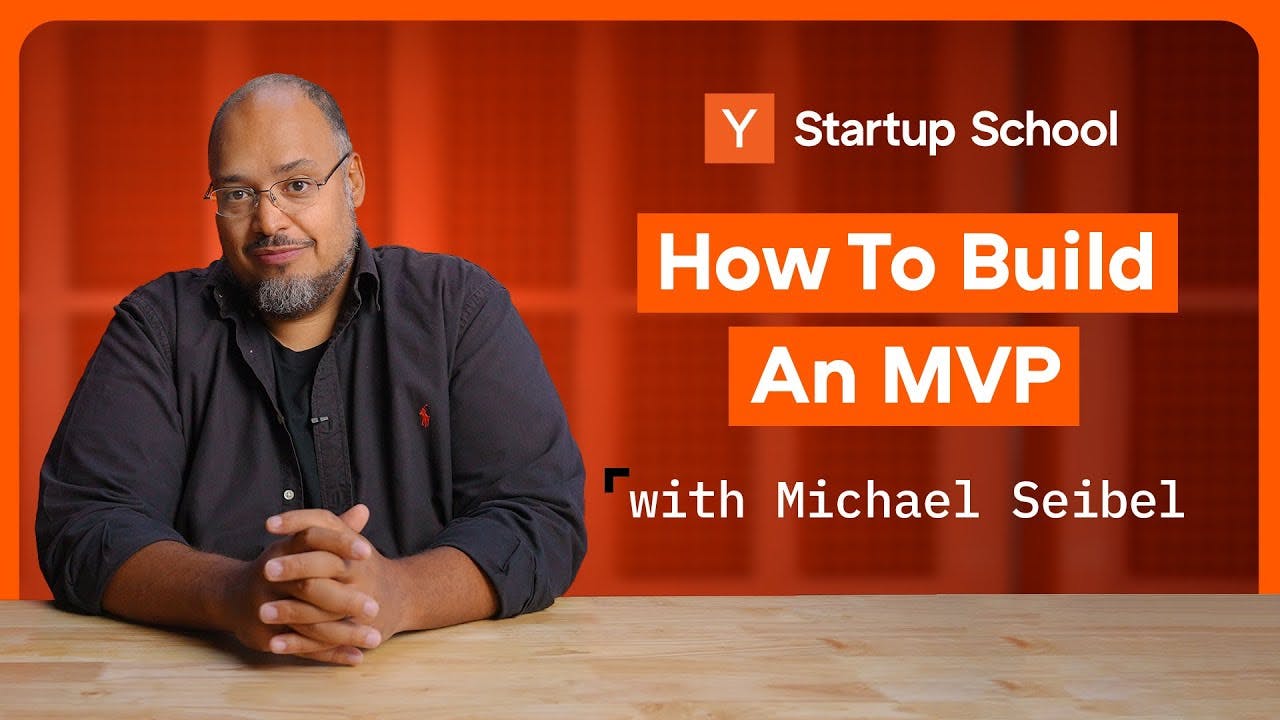How to Build An MVP | Startup School
09 Nov 2023 (2 years ago)

How to Build an Minimum Viable Product (MVP)? (0s)
- It's crucial to launch an MVP quickly and iteratively improve based on customer feedback.
- Learning about the user's needs begins once they have a product to interact with.
- The objective is to solve user problems, not to distract oneself with extensive surveys, competitor analysis, or hiring excessively before launch.
Pre-launch Startup Goals (1m50s)
- Early-stage founders should swiftly release an MVP and engage with initial customers to understand their needs.
- Founders should focus on how to make the product useful for their customers and iterate accordingly.
- Iteration based on user feedback is key to developing a product that customers are excited to use and pay for.
Founders Biggest Fear (4m26s)
- The fear of rejection from early users is common but often unfounded; early adopters are willing to tolerate imperfections.
- Analyzing the fear of failure can reveal that it is usually not the end of a startup; the company can continue after setbacks.
- Even Steve Jobs iterated his products, and first versions were not perfect.
Examples - Software MVP (7m17s) and Airbnb (7m48s) and Twitch (8m36s) and Stripe (9m15s)
- MVPs should be quick to build, have limited functionality, and focus on a narrow user base.
- Airbnb's initial MVP lacked integrated payments, map view, complete rental properties, and was conference-specific.
- Twitch began as Justin TV with continual broadcasting by a single person, and it had high costs due to CDN usage.
- Stripe started with basic credit card processing services that were attractive to other early-stage startups.
Solving Hair On Fire Problem (10m36s)
- MVPs address customers with urgent needs ("hair on fire") that are desperate for any solution, even non-perfect ones.
- Customers with less urgency can be approached later; prioritizing desperate customers simplifies the startup process.
- Surveys do not suffice in understanding how to solve customer problems – actual product interaction is necessary.
- Founders should accept that customers are experts at their problems, not solutions.
Summary Insights
- MVPs are about launching quickly, collecting customer feedback, and iterating without delay.
- Success lies in solving core user problems and improving the product, not in creating perfection on the first try.
- Fear of initial failure shouldn't prevent releasing an MVP since learning and adaptation are integral to startup growth.
- Examples like Airbnb, Twitch, and Stripe illustrate successful MVP strategies focusing on core functionalities.
- Target customers with immediate, "hair on fire" problems for initial product validation and iteration.
Build an MVP Quickly (14m12s)
- Establish a specific deadline to maintain focus on a minimum viable product, such as two weeks, a month, or a month and a half.
- Document your MVP's specifications, listing all the features you think are necessary for launch, to avoid ongoing debates and forgetfulness about features.
- After defining your specs, critically evaluate each feature to determine if it's truly essential for the MVP, removing non-critical features for future versions.
- Avoid becoming too attached to the MVP since it's expected to change and evolve; focus on the customers and their feedback rather than the initial version of the product.